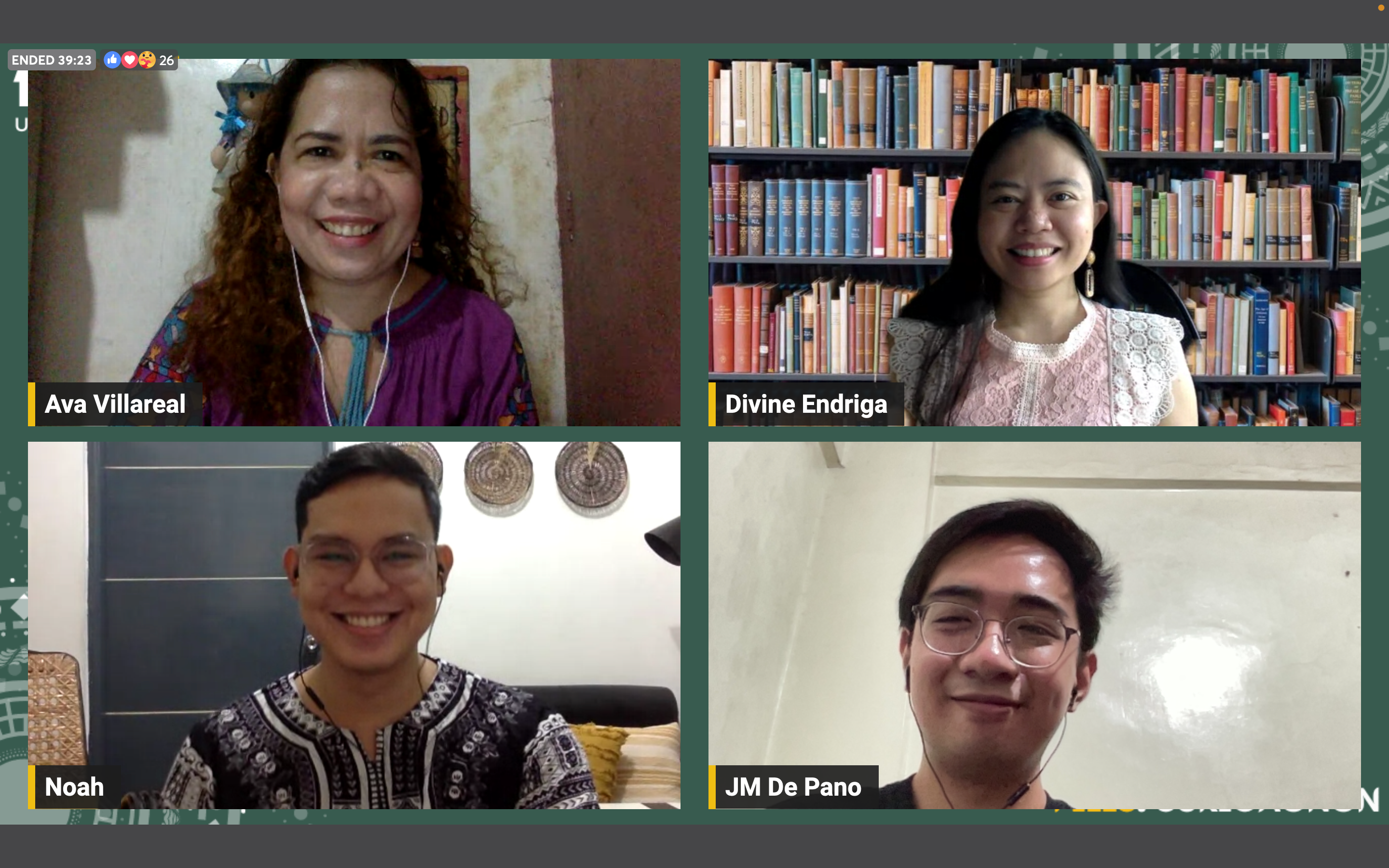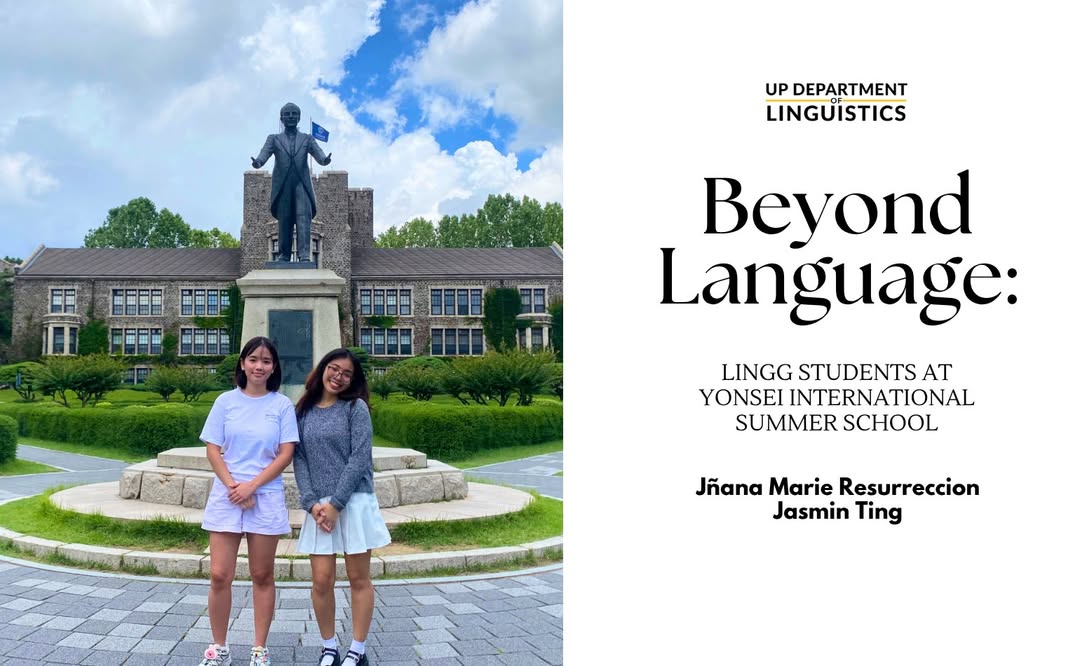
The uniqueness of Philippine languages was once again brought into focus as the fifth installment of the Philippine Indigenous Languages Lecture Series (PILLS) aired last May 22, 2023. This latest PILLS lecture featured UP Department of Linguistics’ PhD student and chair of the Surigaonon Studies Center, Ava Villareal and her lecture titled “Forming Interrogative Sentences in Surigaonon: More Than the Basic.” Villareal’s talk was live streamed on the official YouTube and Facebook pages of the Department.
Villareal began her lecture by giving a brief introduction on the characteristics of Surigaonon, which is spoken in areas of Surigao Del Norte and the northern areas of Surigao Del Sur as well as Northern Agusan Del Norte. The most current known estimate states that there are around 501,000 speakers of this language.
Villareal’s study, which was based on her MA thesis, aimed to: (1) describe how Surigaonon interrogative sentences are formed, (2) illustrate the transformational process that occur in the derivation of interrogative sentences, and (3) identify the types of interrogative constructions used in Surigaonon.
Villareal pointed out that one of the interesting features of Surigaonon interrogative words is how some of them are marked with aspect. These include their word for ‘where,’ which has a perfective aspect form diin and an imperfective form hain, the word for ‘when,’ which has the perfective form kagan-o and imperfective form kun-o, the word for ‘how,’ which has the perfective for tag-uno and the imperfective form unhon. The Surigaonon equivalent for the question words ‘what’ and ‘who’ only have single forms, however, which are uno and sin-o respectively.
She proceeded to describe two types of interrogative sentences in Surigaonon. The first is the polarity question construction. These are formed by the addition of the interrogative marker ba after the predicate and the lack of movement of complements or change in focus. These are also uttered by speakers with a rising tone in the sentence’s prosodic pattern.
The second type of interrogative sentences in Surigaonon – the Wh-interrogative sentences – are further subdivided into two types. These are the Wh-predicate interrogative and the Wh-subject Interrogative.
An example of the former can be seen in sentences with nominal predicate heads. In the declarative Surigaonon sentence, Bayay an premyo ‘The prize is a house.’ where the predicate is the noun bayay ‘house,’ one can replace the noun with the corresponding interrogative uno ‘what.’ We thus get the interrogative sentence, Uno an premyo? ‘What is the prize?’.
In contrast, an example of the Wh-subject Interrogative was demonstrated using the same declarative sentence, Bayay an premyo. By replacing the subject with the interrogative uno, we get the interrogative sentence, Bayay an uno? ‘The house is what?’ Villareal asserts that this type of question formation expresses disbelief or can be used used to counter-check or confirm information.
Another type of interrogative sentence that Villareal discussed is the Wh-object interrogative sentence, which elicits information about an element in the object position. According to Villareal, forming this type of interrogative sentence first requires a relativization process therefore the could be described a more complex than the previously discussed question types.
Villareal’s talk was followed by a lively open forum, where audience members asked about points pertaining to and going beyond Surigaonon interrogatives. The talk concluded with the clear sense that further studies indeed need to be done on the Surigaonon language as well as other lesser-studied Philippine languages to uncover more features that make them distinct.
The recording of the event can be viewed here. Stay tuned to the Department’s social media pages for our future public lectures and events.
Published by Andre Encarnacion



